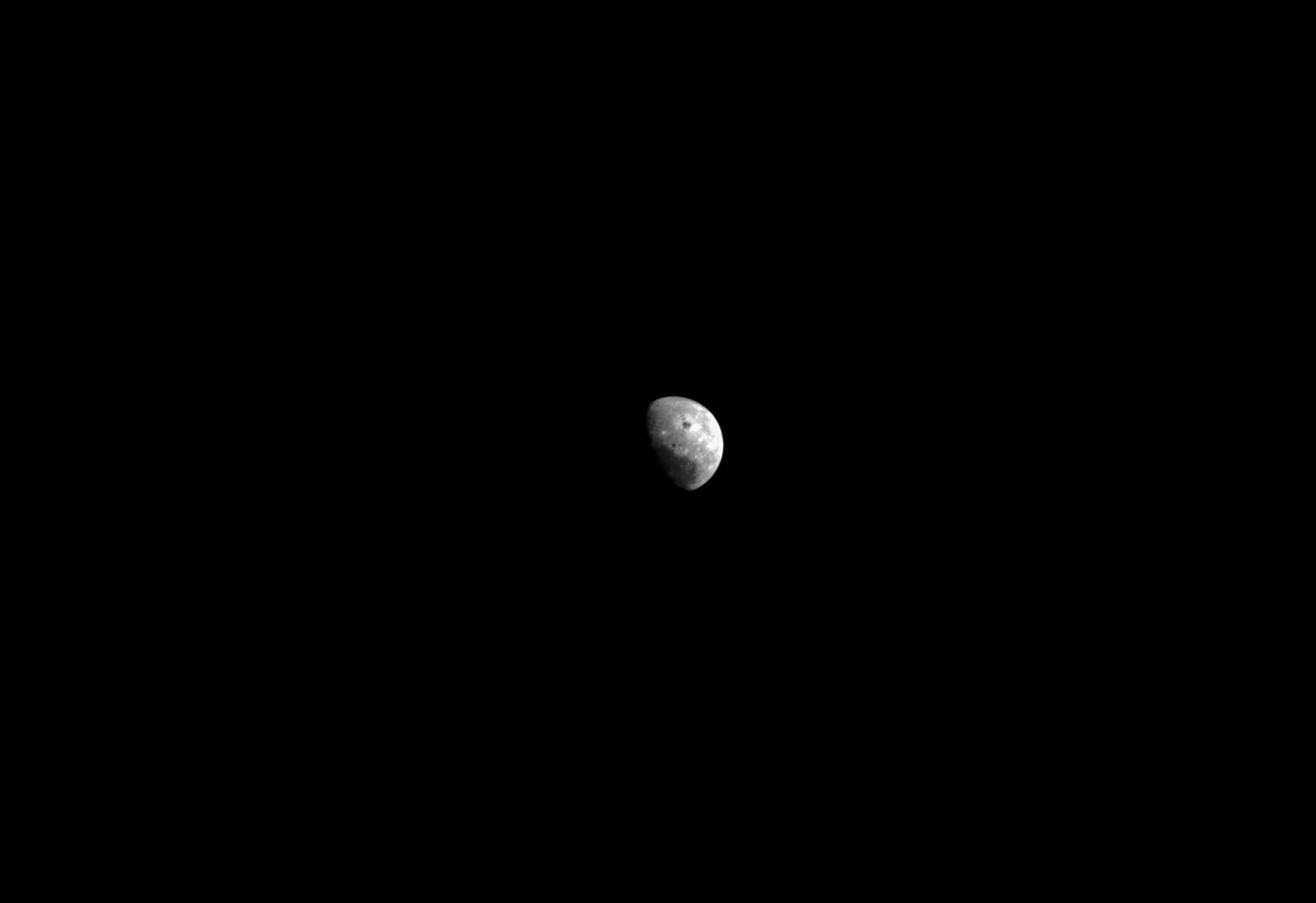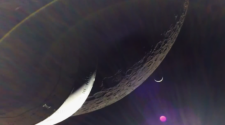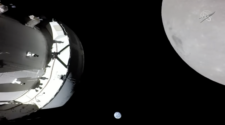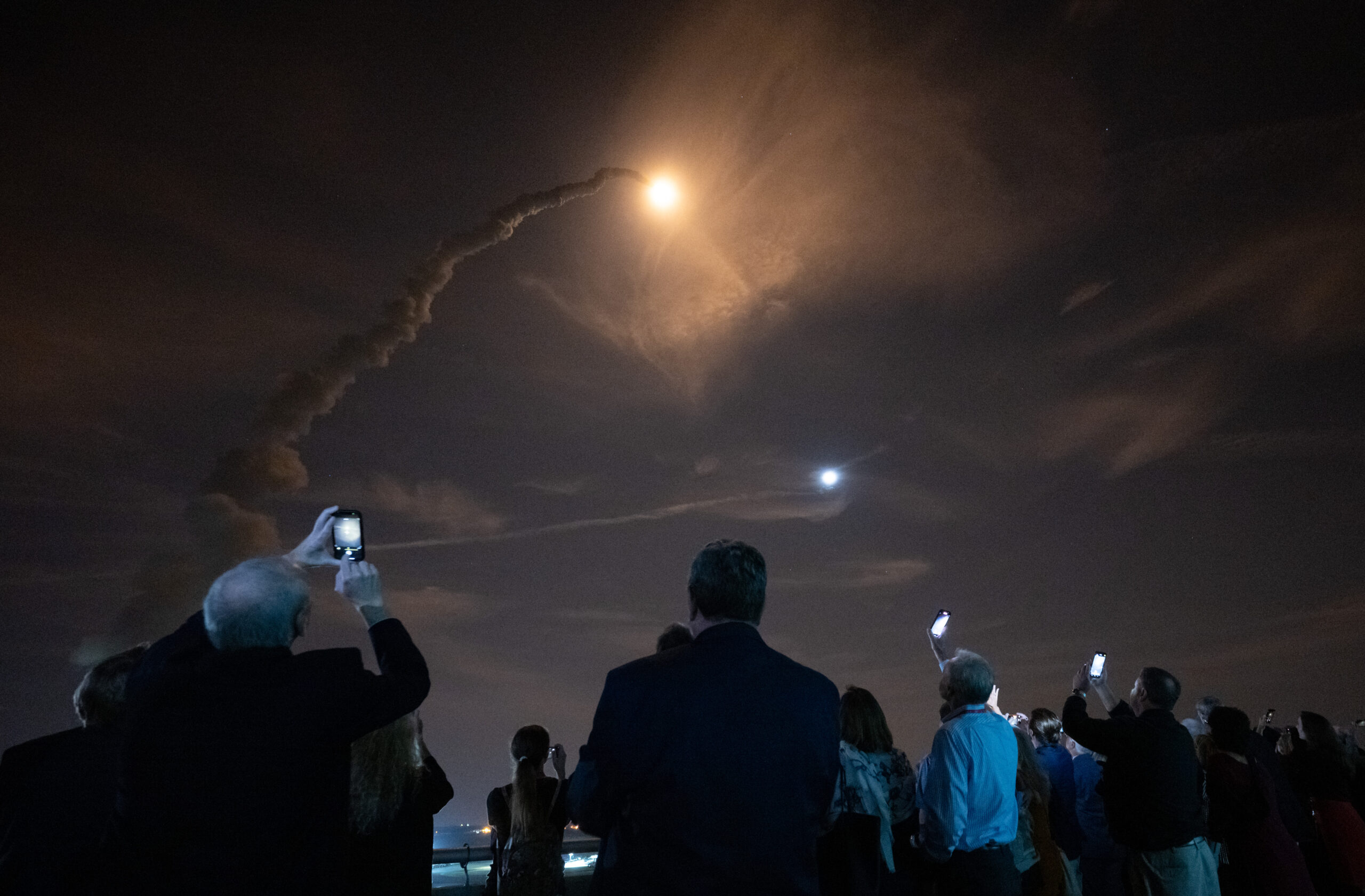
The Artemis era of exploration officially opened with the spectacular nighttime blastoff of NASA’s mammoth SLS rocket for the first time on the Artemis 1 mission on Wednesday, Nov. 16, from the Kennedy Space Center on its maiden lunar test flight with the Orion crew capsule. The mission places America back on the path of returning humans to the Moon after a five-decade hiatus. The new mission passes the torch of leadership in space and science to a new generation – namely the Artemis generation.
Many of us from the Apollo generation have waited 50 years for this moment and are absolutely thrilled that the mantel of space exploration has been passed to the Artemis generation to carry forward brilliantly to the Moon, Mars, and beyond!
The long-awaited and delayed blastoff of the 322-foot tall (98 m) Artemis 1 super heavy stack of SLS and Orion was both inspiring and impressive beyond expectation
The blinding light generated from 8.8 million pounds of thrust spewing from NASA’s $4.1 Billion Space Launch System (SLS) Mega Moon rocket instantly turned night into day past midnight as crowds ringing Florida’s Space Coast roared their approval and cheered the mammoth rocket that successfully propelled NASA’s Orion deep space human capsule on a critical 26-day long unpiloted test flight around the Moon and back – with no astronauts aboard this time.
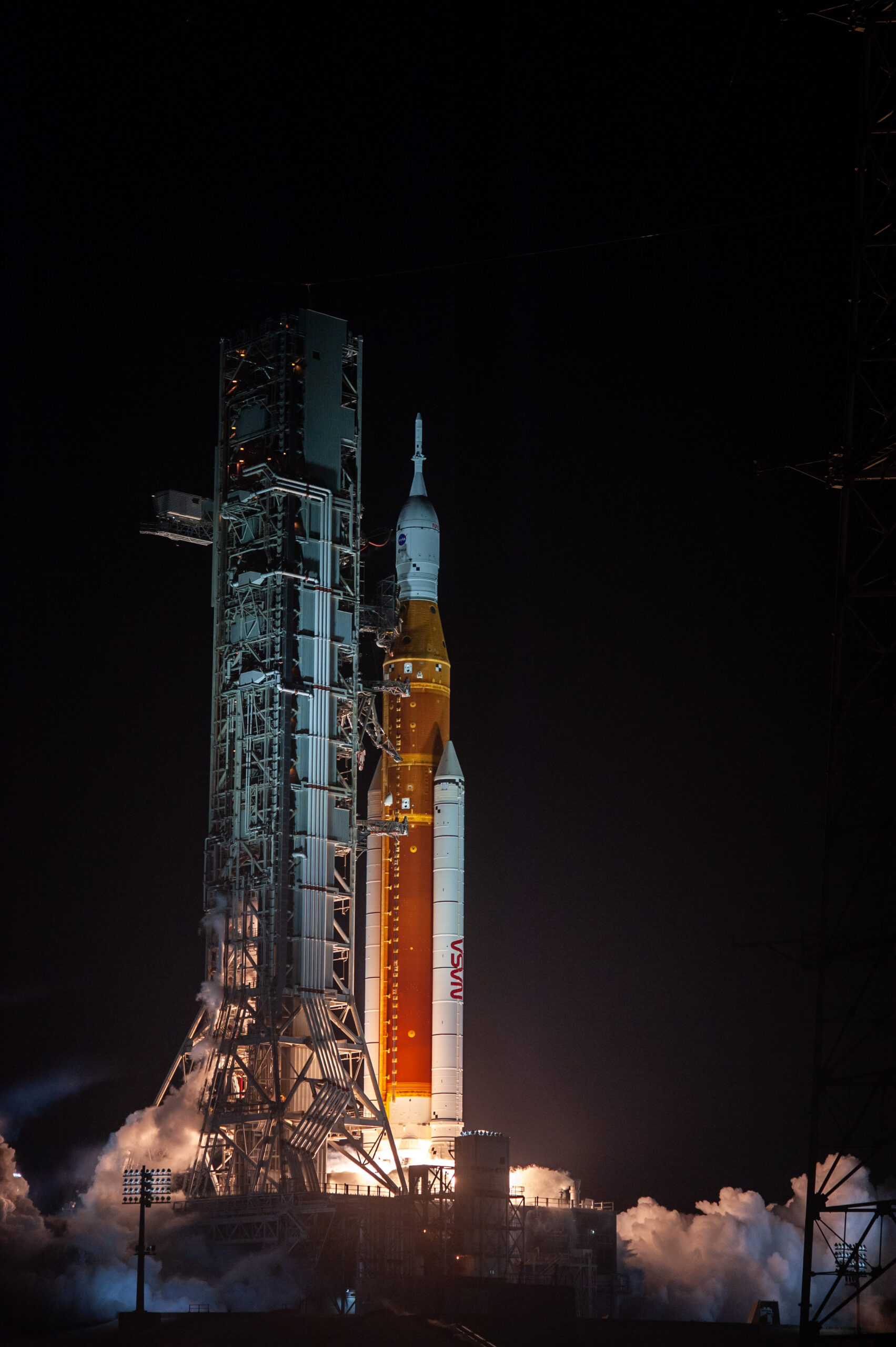
SLS lifted off with an uncrewed Orion capsule for its stunning flight test debut on the Artemis 1 mission at 1:47 a.m. EST (0647 GMT) Wednesday, Nov. 16 from Launch Pad 39B at the Kennedy Space Center in Florida – sending America to the moon with the 1st human rated capsule in 50 years.
SLS now counts as the world’s most powerful rocket ever built – about 15 to 20% more powerful than NASA’s Apollo Saturn V moon rocket and the Space Shuttle.
The 32-story tall two-stage SLS is derived from NASA’s Space Shuttle with the core stage liftoff thrust of 8.8 million pounds provided by a pair of side-mounted solid rocket boosters (SRBs) and four RS-25 main engines – all recycled from the space shuttle and attached to an extended External Tank (ET) also from the shuttle.
Artemis 1 is absolutely critical and must be successful with all major objectives in order for NASA to move forward with Project Artemis to once again land American astronauts on the Moon – potentially as soon as 2025 if all goes well.
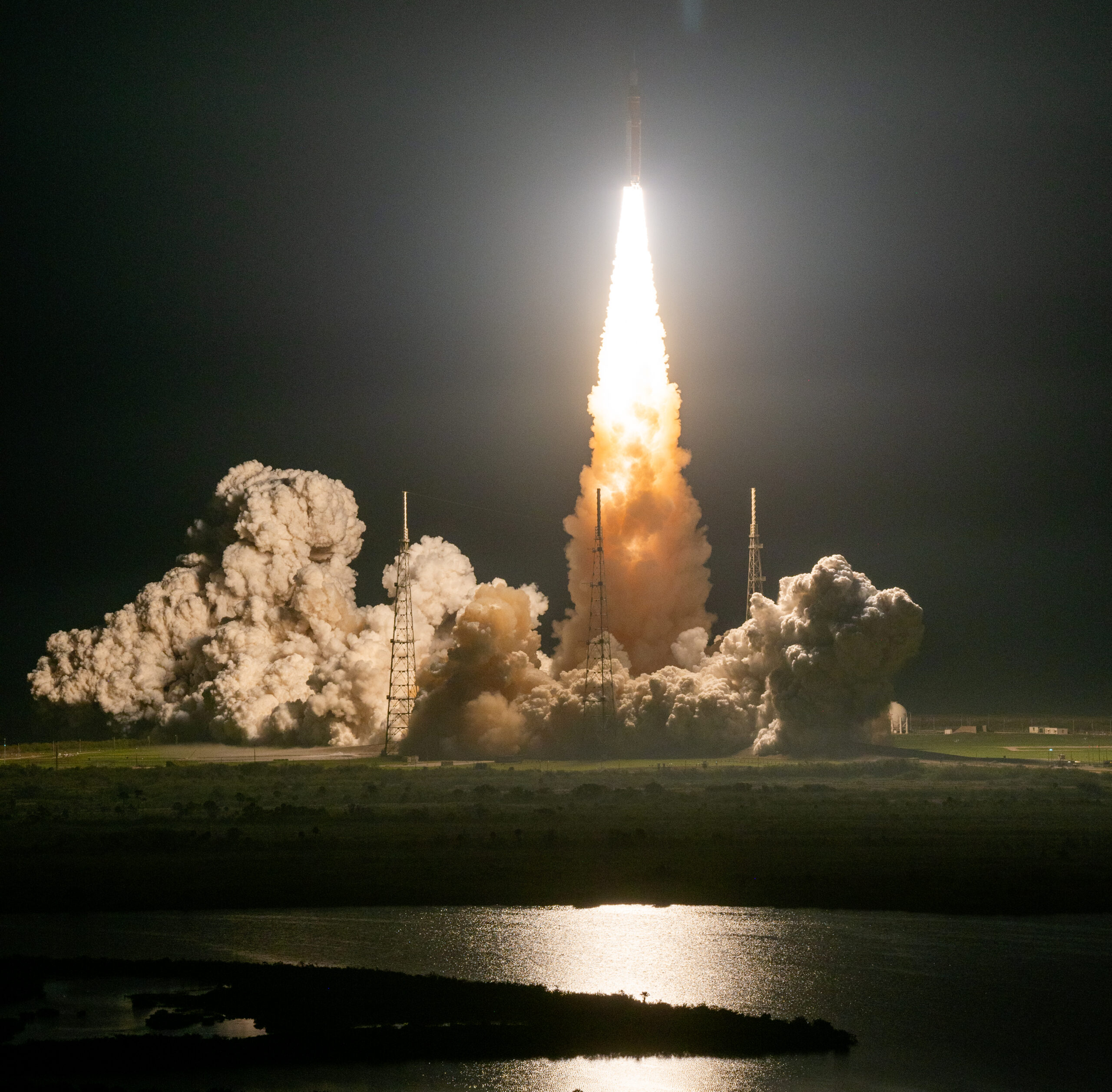
“I have to say, for what we saw tonight, it’s an A-plus,” said NASA Administrator Bill Nelson at the Artemis 1 post-launch press conference.
“It’s a test flight. It took a long time coming to get here. The last time we were on the moon was Apollo 17.”
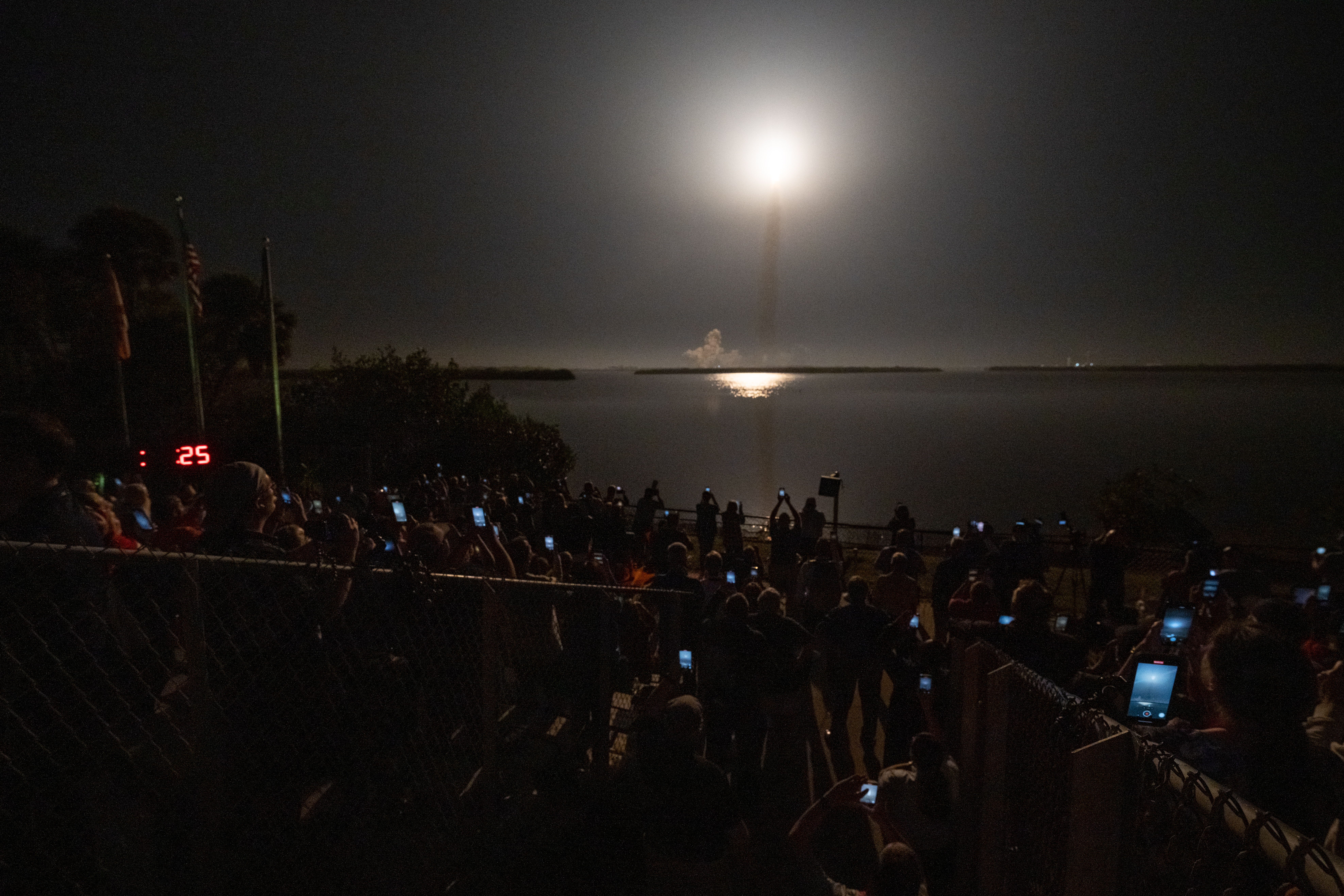
Apollo 17 was launched in 1972 and placed the final pair of NASA astronauts on the moon – Gene Cernan and Harrison Schmidt during the Project Apollo moon landing program begun by President John F. Kennedy in 1961.
No human has left Earth orbit in the past half century after politicians canceled the remaining three Apollo moon landing missions that began in 1969 with Apollo 11 and the first humans to set foot on another celestial body – Neil Armstrong and Buzz Aldrin.
Artemis 1 will push Orion to its limits during a nearly 26-day mission and pave the path for astronauts to fly aboard for the first time to the Moon on the Artemis 2 mission around our nearest neighbor in about 2 years in 2024.
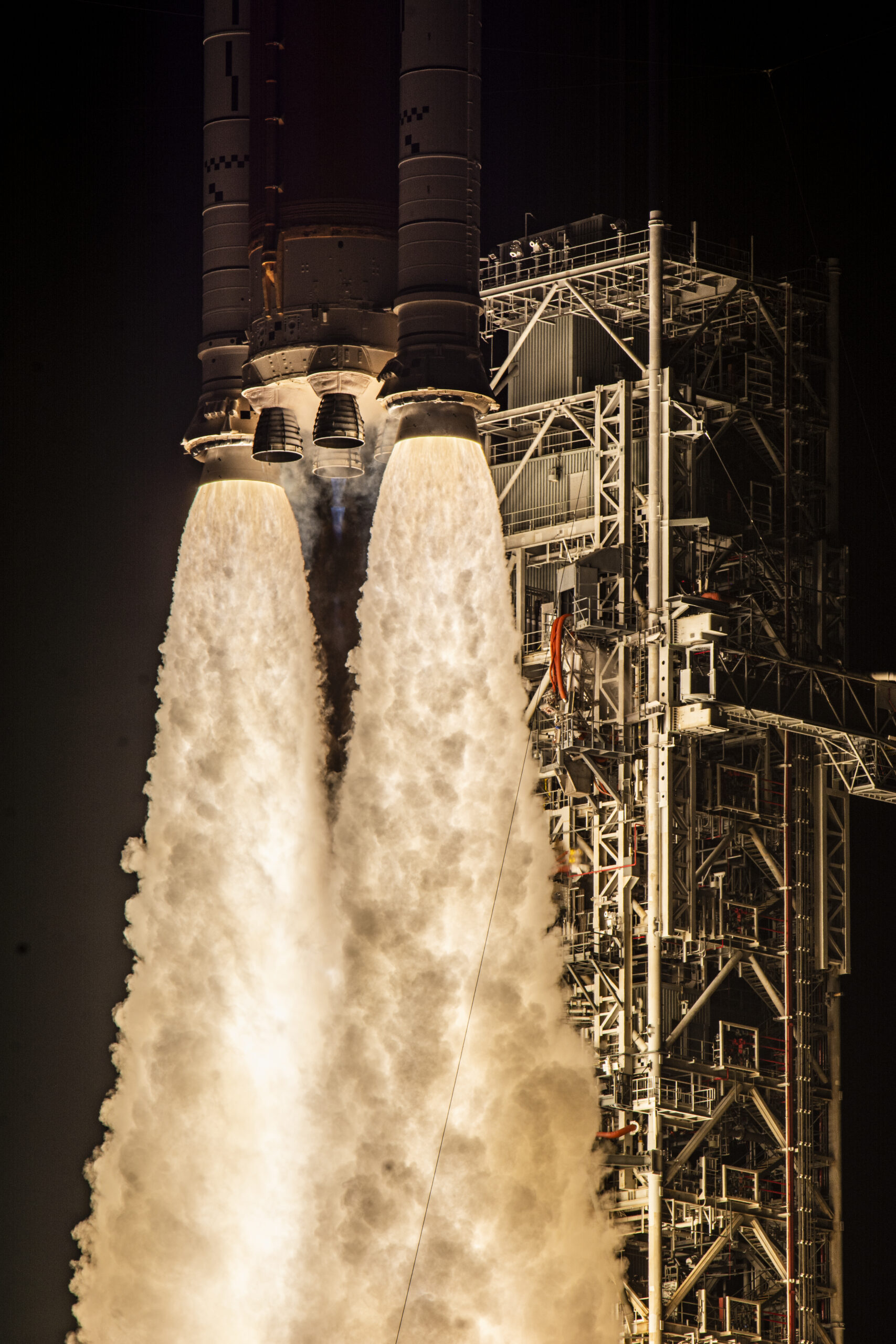
Artemis 1 is an unpiloted lunar test flight with no astronauts on board.
This first lunar test flight of SLS and Orion will conclude after nearly a month of circling the Moon and return with a splashdown of the capsule in the Pacific Ocean on Dec. 11
If all goes well Artemis 2 will launch by late 2024 with a crew of 4 astronauts from the US and Canada.
“What an incredible sight to see NASA’s Space Launch System rocket and Orion spacecraft launch together for the first time. This uncrewed flight test will push Orion to the limits in the rigors of deep space, helping us prepare for human exploration on the Moon and, ultimately, Mars,” said NASA Administrator Bill Nelson.
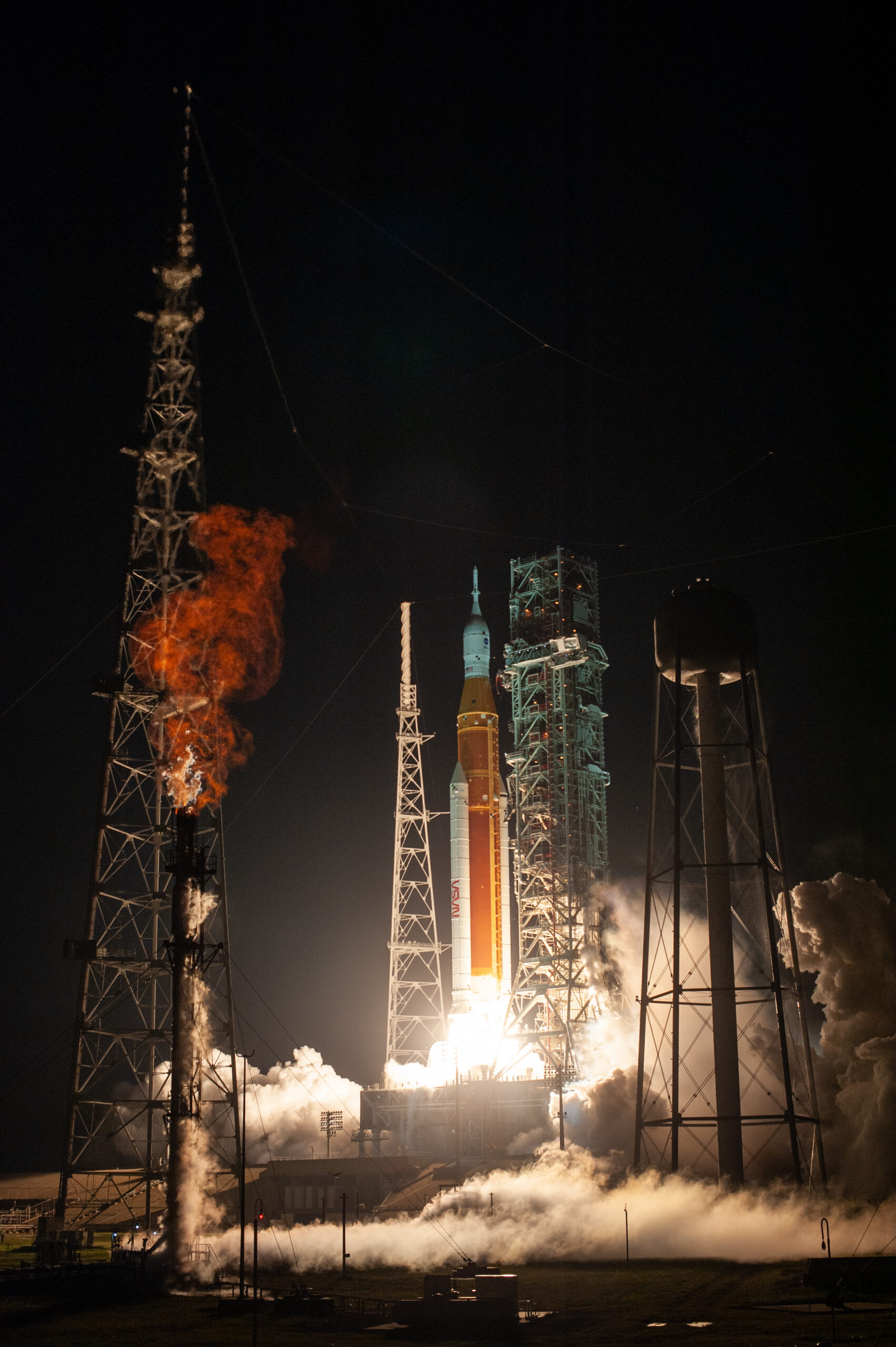
The primary objectives for the Artemis 1 mission that must be accomplished following the successful launch and delivery by the SLS moon rocket are: demonstrating Orion’s heat shield at lunar return re-entry conditions, demonstrating operations and facilities during all mission phases, and retrieving the spacecraft after splashdown.
Artemis 1 is the first integrated flight test of the agency’s deep space exploration systems: the Orion spacecraft, Space Launch System (SLS) rocket, and ground systems and the mission is a critical part of NASA’s Moon to Mars exploration strategy.
The 32-story tall Artemis 1 stack is comprised of NASA’s Space Launch System (SLS) Mega moon rocket integrated with the Orion crew spacecraft on top.
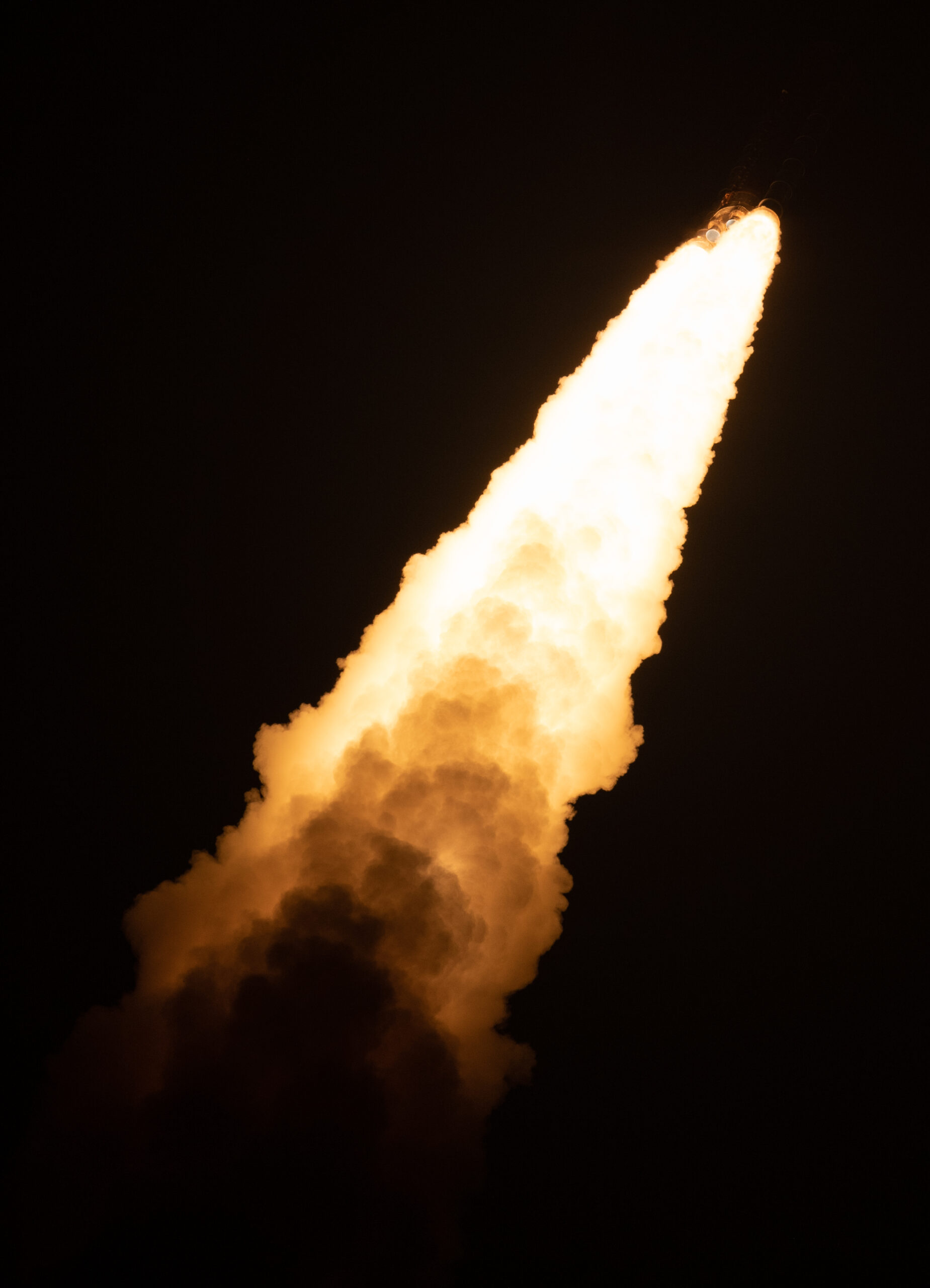
The launch is the first leg of a mission in which Orion is planned to travel approximately 40,000 miles beyond the Moon and return to Earth over the course of 25.5 days – concluding with a splashdown in the Pacific Ocean and recovery of Orion.
Orion will arrive in a distant retrograde lunar orbit on the morning of Monday, Nov. 21, and fly by the moon within 80 miles of the surface.
The distant retrograde orbit is a highly stable orbit and Orion will be flung out to about 40,000 miles beyond the Moon, farther than any human-rated spacecraft ever.

Two earlier attempts to launch Artemis 1 were scrubbed for technical reasons in August and September
Following liftoff, the core stage fired as planned. The SRBs provided 80 percent of liftoff thrust delivering 3.3 million pounds of thrust each and separated at about two and a half minutes into the flight followed by the launch abort system jettison.
The core stage continued to fire for over eight minutes with the quartet of RS-25 engines providing a total of about 2 million pounds of thrust.
Stage separation and ignition of the ICPS upper stage delivered Orion to its initial orbit.
Orion sent stunning images departing Earth after liftoff.
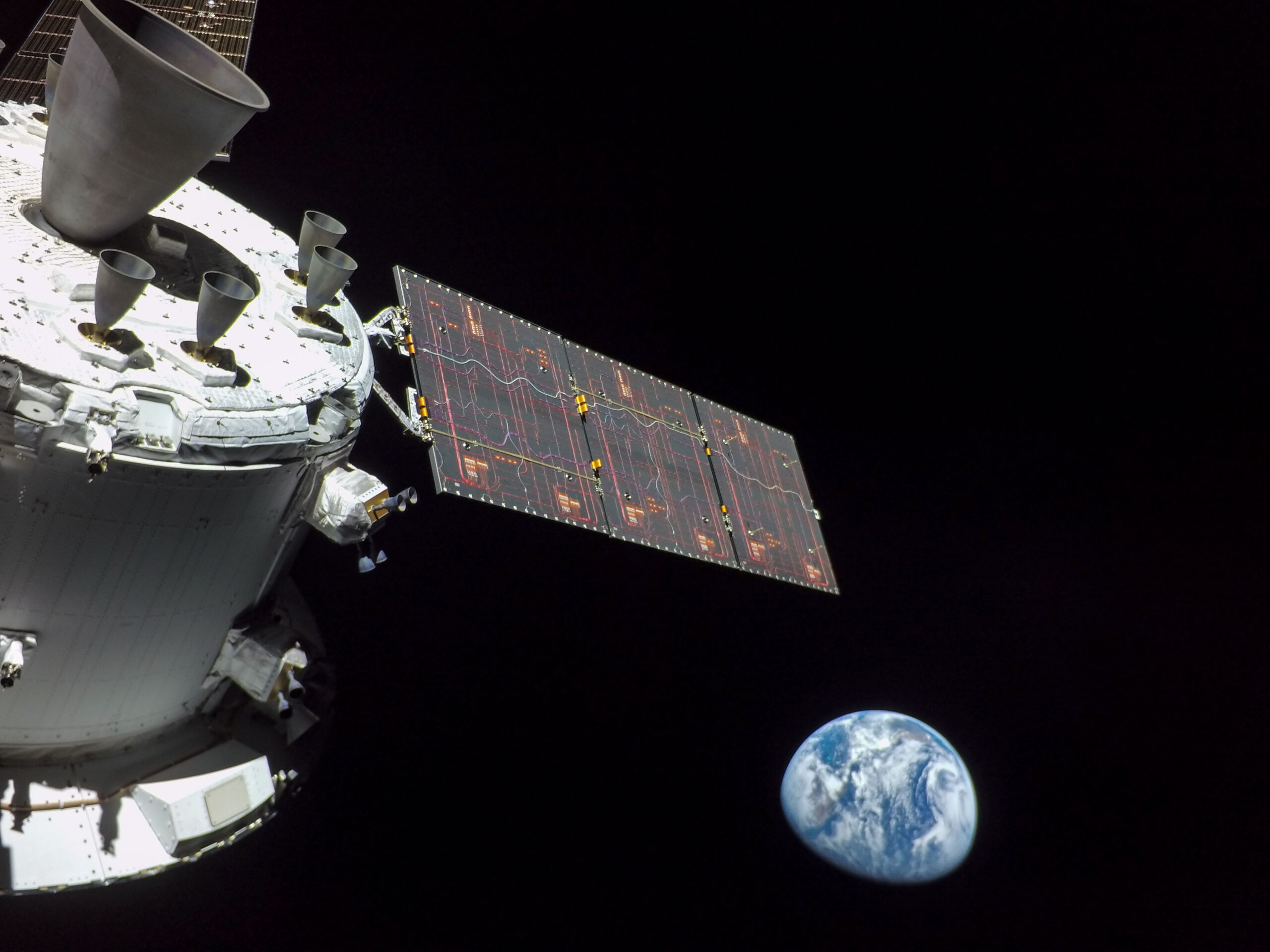
Orion next “deployed its solar arrays and engineers began performing checkouts of the spacecraft’s systems. About 1.5 hours into the flight, the rocket’s upper stage engine successfully fired for approximately 18 minutes to give Orion the big push needed to send it out of Earth orbit and toward the Moon.
Orion soon transmitted breathtaking new views of the Earth on its way to the Moon.
Orion has separated from its upper stage and is on its outbound coast to the Moon powered by its service module, which is the propulsive powerhouse provided by ESA (European Space Agency) through international collaboration.
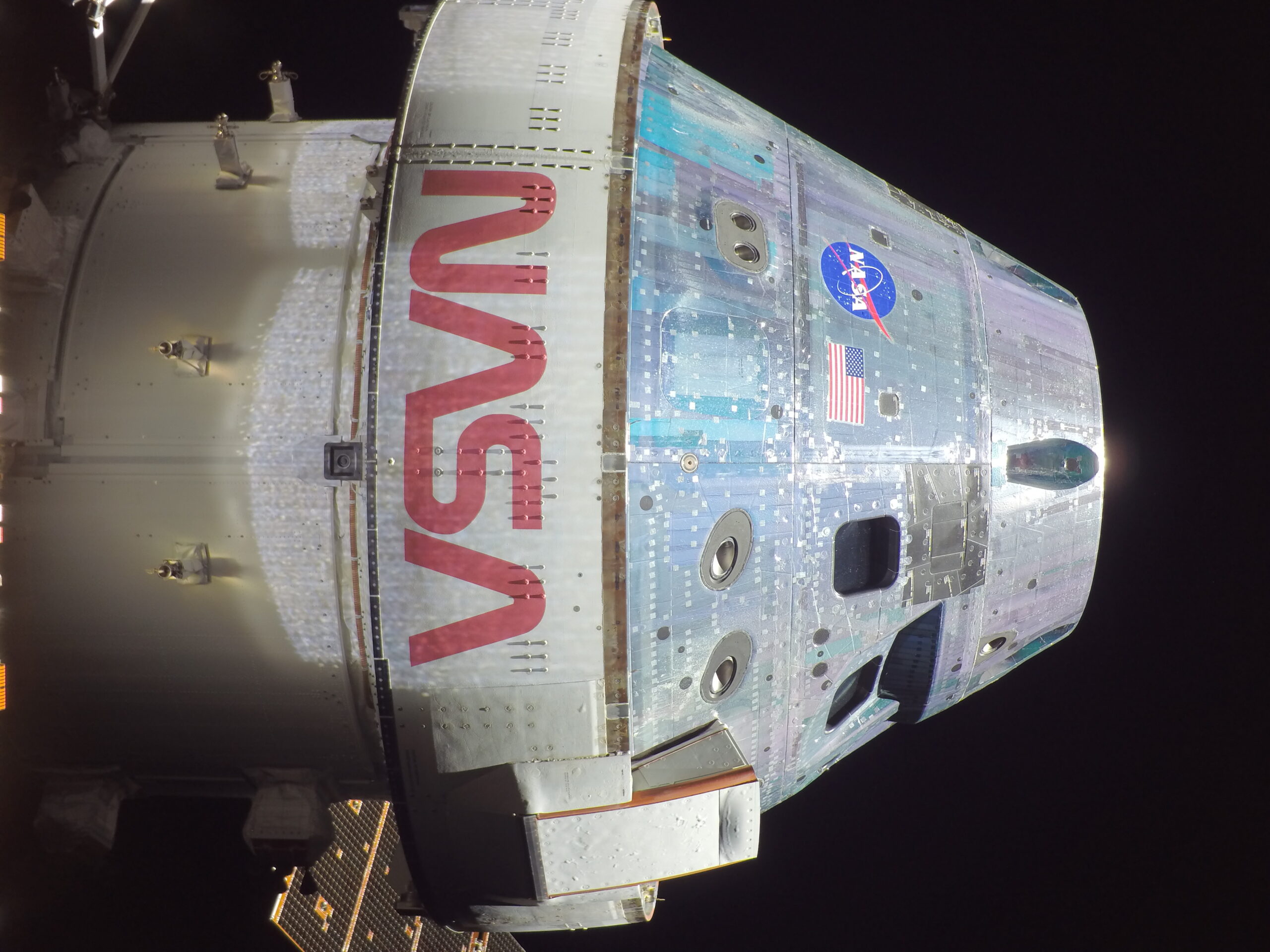
“It’s taken a lot to get here, but Orion is now on its way to the Moon,” said Jim Free, NASA deputy associate administrator for the Exploration Systems Development Mission Directorate. “This successful launch means NASA and our partners are on a path to explore farther in space than ever before for the benefit of humanity.”
Over the next several hours, a series of 10 small science investigations and technology demonstrations, called CubeSats, deployed from a ring that connects the upper stage to the spacecraft. Each CubeSat has its own mission that has the potential to fill gaps in our knowledge of the solar system or demonstrate technologies that may benefit the design of future missions to explore the Moon and beyond.
Orion’s service module has performed the first of a series of burns to keep Orion on a course toward the Moon. Mission controllers at NASA’s Johnson Space Center in Houston are conducting additional checkouts and course corrections as needed.
“The Space Launch System rocket delivered the power and performance to send Orion on its way to the Moon,” said Mike Sarafin, Artemis I mission manager. “With the accomplishment of the first major milestone of the mission, Orion will now embark on the next phase to test its systems and prepare for future missions with astronauts.”
